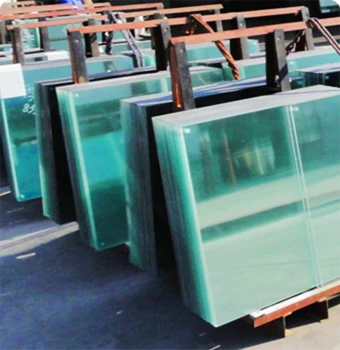The Allure of Water Pattern Glass An Artistic Journey
Water pattern glass, with its fluid designs and enchanting aesthetics, represents a unique intersection of art and functionality. This distinctive type of glass, characterized by its wave-like patterns reminiscent of rippling water, has captivated artists, designers, and collectors alike. The interplay of light and texture in water pattern glass creates a mesmerizing effect that enhances both decorative and utilitarian objects. This article delves into the origins, production techniques, and the contemporary significance of water pattern glass.
Historical Context
The roots of water pattern glass can be traced back to early glassmaking techniques, which began around 2000 BC in Mesopotamia. However, it was during the late 19th and early 20th centuries that water pattern glass truly flourished. Influential movements such as Art Nouveau embraced organic forms and flowing lines, paving the way for glass artists to explore and experiment with new techniques. The aesthetic appeal of water patterns resonated strongly with the ideals of this era, as artists sought to capture the beauty of nature in their work.
Production Techniques
Creating water pattern glass involves a meticulous process that requires skill and creativity. The most common techniques employed include blowing, pressing, and casting. Each method contributes to the unique texture and appearance of the finished product.
1. Blowing This traditional technique involves inflating molten glass into a bubble using a blowpipe. As the glass expands, artists manipulate its shape and incorporate water patterns by swirling or rippling the glass while it is still malleable. The resulting pieces often exhibit a delicate translucence that enhances the fluidity of the pattern.
2. Pressing In this method, molten glass is placed into a mold and pressed into shape. Molds can be designed to create intricate water patterns, resulting in uniform and repeatable designs. Pressed glass can be produced more efficiently for mass production while maintaining the aesthetic qualities that characterize water pattern glass.
water pattern glass
3. Casting This technique involves pouring molten glass into a pre-shaped mold. By carefully controlling the temperature and cooling process, artists can achieve specific patterns and effects within the glass. Cast water pattern glass often shows remarkable depth and detail, making it a favored choice for limited edition pieces and fine art objects.
Contemporary Significance
In today's design landscape, water pattern glass continues to inspire. From decorative vessels to architectural installations, this medium has found a myriad of applications. Contemporary artists merge traditional techniques with modern aesthetics, creating a dialogue between the past and present. As sustainability becomes increasingly important in design, the ability to create stunning pieces from recycled glass is gaining traction within the water pattern glass community.
Notable figures such as Dale Chihuly, who is known for his large-scale glass sculptures, have incorporated water patterns into their work, pushing the boundaries of what glass art can achieve. Galleries and exhibitions showcasing water pattern glass often attract a diverse audience, united by the common appreciation for its beauty.
Furthermore, water pattern glass has a noteworthy presence in interior design. From bespoke light fixtures to elegant tabletops, designers are incorporating this material into various settings, where it serves both aesthetic and functional purposes. The way light refracts through the patterns creates a dynamic atmosphere, transforming ordinary spaces into extraordinary environments.
Conclusion
Water pattern glass stands as a testament to the artistry and craftsmanship that has evolved over centuries. Its fluid designs and striking visual appeal continue to engage audiences, bridging the gap between art and utility. As new generations of artists and designers explore this captivating medium, the legacy of water pattern glass will undoubtedly endure, evolving with the times while honoring its rich historical roots. Whether displayed as an art piece or integrated into functional objects, the beauty of water pattern glass will continue to inspire and captivate, much like the nature it seeks to reflect.
 Afrikaans
Afrikaans  Albanian
Albanian  Amharic
Amharic  Arabic
Arabic  Armenian
Armenian  Azerbaijani
Azerbaijani  Basque
Basque  Belarusian
Belarusian  Bengali
Bengali  Bosnian
Bosnian  Bulgarian
Bulgarian  Catalan
Catalan  Cebuano
Cebuano  Corsican
Corsican  Croatian
Croatian  Czech
Czech  Danish
Danish  Dutch
Dutch  English
English  Esperanto
Esperanto  Estonian
Estonian  Finnish
Finnish  French
French  Frisian
Frisian  Galician
Galician  Georgian
Georgian  German
German  Greek
Greek  Gujarati
Gujarati  Haitian Creole
Haitian Creole  hausa
hausa  hawaiian
hawaiian  Hebrew
Hebrew  Hindi
Hindi  Miao
Miao  Hungarian
Hungarian  Icelandic
Icelandic  igbo
igbo  Indonesian
Indonesian  irish
irish  Italian
Italian  Japanese
Japanese  Javanese
Javanese  Kannada
Kannada  kazakh
kazakh  Khmer
Khmer  Rwandese
Rwandese  Korean
Korean  Kurdish
Kurdish  Kyrgyz
Kyrgyz  Lao
Lao  Latin
Latin  Latvian
Latvian  Lithuanian
Lithuanian  Luxembourgish
Luxembourgish  Macedonian
Macedonian  Malgashi
Malgashi  Malay
Malay  Malayalam
Malayalam  Maltese
Maltese  Maori
Maori  Marathi
Marathi  Mongolian
Mongolian  Myanmar
Myanmar  Nepali
Nepali  Norwegian
Norwegian  Norwegian
Norwegian  Occitan
Occitan  Pashto
Pashto  Persian
Persian  Polish
Polish  Portuguese
Portuguese  Punjabi
Punjabi  Romanian
Romanian  Russian
Russian  Samoan
Samoan  Scottish Gaelic
Scottish Gaelic  Serbian
Serbian  Sesotho
Sesotho  Shona
Shona  Sindhi
Sindhi  Sinhala
Sinhala  Slovak
Slovak  Slovenian
Slovenian  Somali
Somali  Spanish
Spanish  Sundanese
Sundanese  Swahili
Swahili  Swedish
Swedish  Tagalog
Tagalog  Tajik
Tajik  Tamil
Tamil  Tatar
Tatar  Telugu
Telugu  Thai
Thai  Turkish
Turkish  Turkmen
Turkmen  Ukrainian
Ukrainian  Urdu
Urdu  Uighur
Uighur  Uzbek
Uzbek  Vietnamese
Vietnamese  Welsh
Welsh  Bantu
Bantu  Yiddish
Yiddish  Yoruba
Yoruba  Zulu
Zulu 

